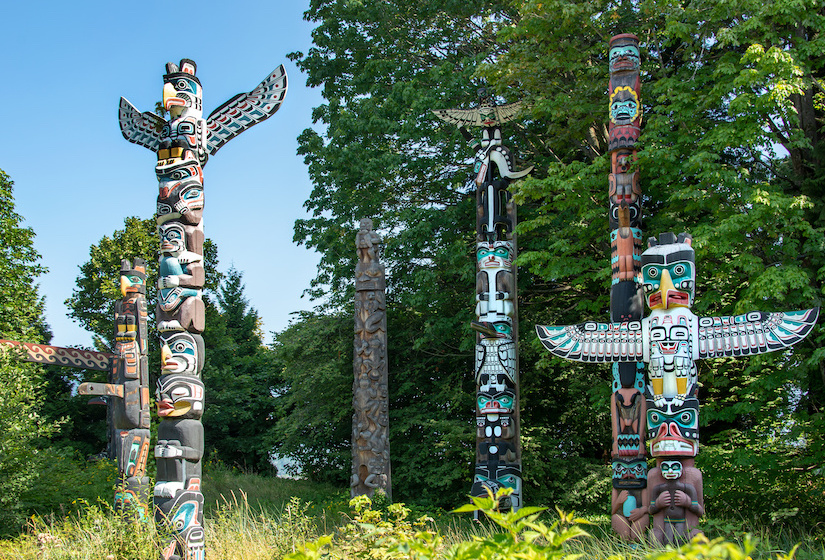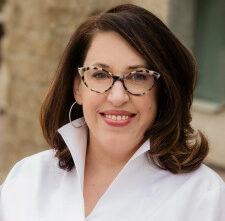
Opinion: Moving towards a community-driven model of EM
December 2, 2022
By Alison Poste
 Stanley Park Totem Poles in Vancouver, British Columbia, Canada. Delphotostock - stock.adobe.com.
Stanley Park Totem Poles in Vancouver, British Columbia, Canada. Delphotostock - stock.adobe.com. In a recent conversation I had with a community elder, he shared with me the traditional four-year cycle that has been a part of Indigenous peoples lives for millennia. These activities have followed the cycle of honouring, preparing, gathering, and harvesting. These practises have endured, despite the impacts of colonialism, the impacts of residential schools, the wage economy and other political constraints.
In reflecting on the lesson shared with me, it struck me how applicable the four-year cycle is to the core pillars of emergency management, namely mitigating, preparing, responding and recovering from natural and human-caused emergencies and disasters. In our mitigation efforts, we honour and – when it’s done right – we strengthen the capacity of the land to support us. In harvesting from the land, we respond and enable the land to recover for future harvesting seasons.
In the Indigenous communities (particularly the urban Indigenous) I have worked with during my emergency management career, each has described to me the everyday emergencies they encounter, from food insecurity to supporting those experiencing homelessness. Friendship centres serve Indigenous peoples who do not reside on a reserve or a First Nation – in B.C. this is 78 per cent of Indigenous people in the province. The leadership demonstrated by friendship centres in these areas continues to be an example of community-led and community-driven resilience.
In my view, standard conceptions of emergency management, throughout the four pillars of mitigation, preparedness, response and recovery, continue to reflect the inequities structurally built into our society. Obviously, existing initiatives are well-intentioned, but disproportionate outcomes continue to impact Indigenous communities during times of disaster.
During Emergency Preparedness Week, as emergency managers, we promote the importance of making a plan, building 72-hour kits, etc. The challenge is these paradigms assume an enormous amount of privilege. If your everyday concerns include food insecurity, messaging encouraging you to have a hand-powered lights, a wind-up radio and a week’s worth of canned goods on hand, are not likely to resonate.
The unfortunate reality is that many urban Indigenous individuals have often reported racist and discriminatory behaviour and actions at municipally run reception centres, cooling centres, and the like. By leveraging what already works (many Indigenous evacuees will default to a friendship centre because it’s the only culturally safe option available) we can offer appropriate supports where the community is.
The question is: how do we develop emergency planning resources that actually resonate with the communities served by friendship centres?
The academic literature in emergency management has seen a distinct shift to a whole-of-community approach to emergency management. Study after study has found that information and resources coming from trusted community resources like friendship centres lead to better outcomes and faster recovery times.
The Sendai Approach to Disaster Risk Reduction has formalized the whole-of-community approach, and is forming one of the core principles of B.C.’s new Emergency Programs Act, along with the UNDRIP.
The whole-of-community approach is centred on a number of interrelated concepts:
- Understand and meet the actual needs of the whole community
- The more we know about communities, the better we can understand their real-life safety and sustaining needs and their motivations to participate
- Friendship centres intimately understand the actual needs of the communities they serve
- Engage and empower all parts of the community
- When the community is engaged in authentic dialogue, it is empowered to identify its needs and existing resources that can address them
- Strengthen what works well in communities on a daily basis
- Leverage institutions, assets and networks that already work well
So, how do we bridge the gap between our proven strengths as the friendship centre movement and the supports needed in the community during emergencies? Because the current legislation is still based on a hierarchical model, adequate supports are often simply unavailable for friendship centres.
In B.C., the government is starting to recognize the value provided by community-driven organizations, and the opportunities that can be leveraged. These are not cookie-cutter approaches – what works for urban Indigenous communities are not likely to work for a seniors’ organization or faith-based group.
In B.C., the new Emergency Programs Act set to be tabled this fall in the legislature will more accurately reflect Sendai principles that engages and empowers communities and strengthens what already works well for the individuals we serve.
 Alison Poste is an emergency management professional based in B.C. Reach her at alisonposte@gmail.com an on LinkedIn: Alison Poste.
Alison Poste is an emergency management professional based in B.C. Reach her at alisonposte@gmail.com an on LinkedIn: Alison Poste.
Print this page